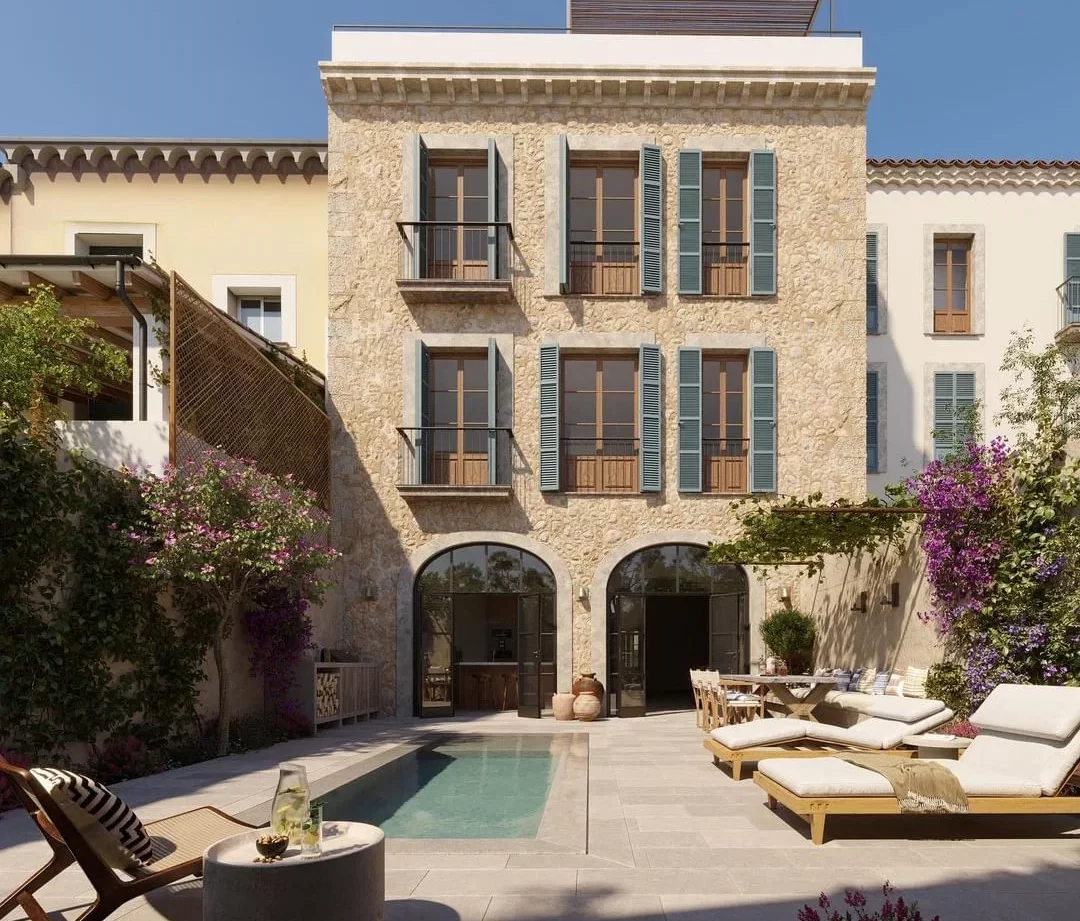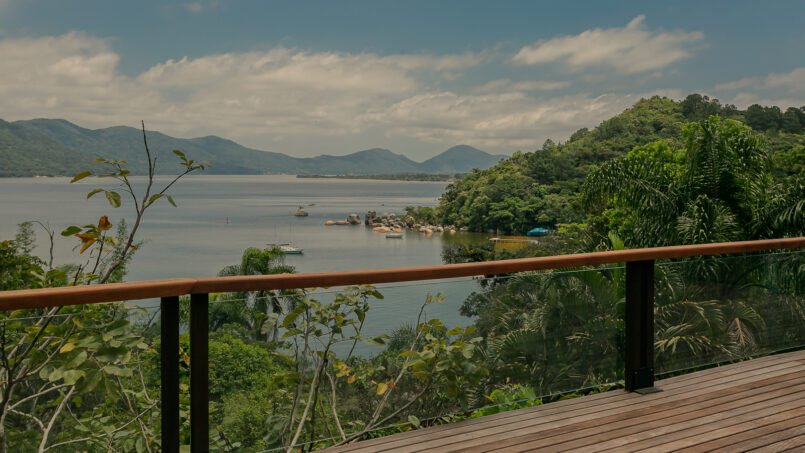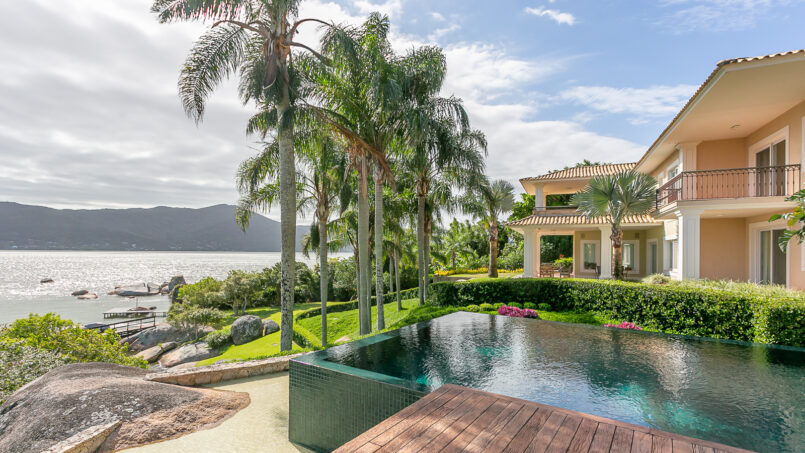Luxury Italian Villas: the evolution in interior design
Luxury villas have a rich and fascinating history dating back well over 2000 years. The first known villas were built during the Roman Empire, a period that witnessed the splendor of luxury in Roman civilization. Therefore, today's villas seek to perpetuate the heritage left by Roman villa designers at the time. As well as, adding your unique touch of style and design to create a higher quality of life, integrated and more modern experience.

The distinction of Roman villas
Pliny the Elder, a roman philosopher who lived until the year 79 AD, observed the existence of two types of villas: the urban villa and the rustic villa. The urban villa was a property located on the outskirts of Rome and often used as a refuge to escape the heat of the Roman summer, while the villa rustica was a rural property easily accessible from Rome, intended for short stays. Therefore, both were designed to cater to the wealthy elite of the time, emphasizing comfort and style. Interestingly, the rustic villa was occupied seasonally by the owners. In other words, remembering the modern practice of vacations, in which many sought refuge in the beautiful hills of the South of France, in Tuscany, Italy, or in Ubud, Bali.
The magic of interior design
As for the design of Roman villas, it is difficult for art historians to identify the designers and builders of ancient villas. The true story of villa design begins in the Italian Renaissance, a period that has had a profound influence on design and art ever since. Some of the largest villas still standing are the Medici Villas, built in the 15th century and designed by Michelozzi and Niccolo Tribolo. In this way, the later villas designed by Niccolo Tribolo are extraordinary examples of Renaissance and Baroque architecture. These villas were vast, in contrast to the small boutique resorts we find today.
The first designer to modernize the villas was Andrea Palladio, considered one of the most influential figures in the history of Western architecture. In this way, he designed and built villas in northern Italy for the Venetian aristocracy. By consolidating independent farm buildings into a single structure, that is, organizing that structure with a strong center and symmetrical wings, it gave new life to old decaying villas. As well as, transforming them into examples of luxury accommodation.
The Palladian revival in England
In 18th century England there was a revival of interest in Palladio and Inigo Jones, which led to the development of Neo-Palladian villas along the River Thames. At this time, the word “villa” was used to describe any large, detached suburban home with landscaped botanical gardens. Eventually, the term “villa” became widely used and fell into disuse, being replaced by the word “bungalow”.
Today, the concept of a villa is widely associated with southern Europe, Latin America, German-speaking countries, and the west coast of the United States. However, I suggest that there was a second Renaissance in villa design; This second Renaissance is based on the transformation of large and imposing villas into small boutique resorts, maintaining the charm of the original villas. It is often possible when staying in villas across southern Europe to feel disappointed with what they call luxury accommodation as they tend to be second homes rented out in the summer with a lack of care and attention.
The design of modern Italian villas
Modern Italian villa design combines traditional Italian architectural elements with contemporary design principles. As a result, houses that combine classic elegance with cutting-edge style and functionality. So, here are some key features of modern Italian villa design:

1. Straight lines and Minimalism:
Modern Italian villa design often incorporates straight lines and a minimalist approach to create an elegant, uncluttered aesthetic. It maintains a sense of simplicity while displaying a sophisticated design.
2. Open Concept Layouts:
Like many houses Modern, Italian villa designs often feature open-concept floor plans that seamlessly connect different living spaces. In other words, this improves the flow of natural light and promotes a feeling of spaciousness.
3. Contemporary Materials:
While traditional Italian villas often feature natural materials like stone and wood, modern Italian villa design incorporates a wide range of materials. Glass, steel, concrete and innovative materials are used to create a balance between tradition and innovation.
4. Large Windows and Natural Light:
Large windows, including floor-to-ceiling glass walls and sliding doors, are used to maximize natural light. As well as offering stunning views of the surrounding countryside or seaside locations.
5. Integration with Nature:
Modern Italian villas often prioritize a connection to nature. Outdoor spaces such as terraces, patios and gardens. Therefore, they are perfectly integrated into internal areas, blurring the boundaries between internal and external environments.
Modern Italian villa design is a fusion of classic Italian architectural elements and contemporary design principles. Your goal is to create houses luxurious, functional and visually stunning spaces that pay homage to Italy's rich design heritage while embracing the comforts and technologies of the modern world.
Types of Italian Villa Interior Design
Italian villa interior design encompasses a wide variety of styles and aesthetics that reflect Italy's rich history, culture, and architectural traditions. From the warmth and elegance of Italian living rooms to the romantic and serene atmospheres of Italian bedrooms. In this way, from the functionality and style of Italian kitchens to the luxurious, spa-like qualities of Italian bathrooms, each room in an Italian villa tells a unique story.
Therefore, we will delve into the distinctive features and design elements that define these diverse spaces, showing how they harmoniously blend timeless elegance with modern comfort to create inviting and visually stunning interiors.
Italian Living Room
Italian living rooms are characterized by their elegance and comfort. They often feature large windows that let in lots of natural light, creating a warm and welcoming atmosphere. As well as, in terms of furniture, you will find luxurious and comfortable sofas and armchairs, often covered in rich fabrics such as velvet or leather. Conversely, the color palette can include earthy tones, warm neutrals, and rich jewel tones. Italian living rooms often display art and decorative items, such as ornate mirrors and intricate wall sconces, to add a touch of opulence. Additionally, architectural details such as coffered ceilings, decorative moldings, and arches add to the room's classic charm.
Italian Room
Italian bedroom designs are known for their romantic and cozy atmosphere. They typically incorporate sumptuous bedding with soft linens, and the headboard is often the focal point, featuring intricate detailing or an upholstered design. As well, the color palette in Italian bedrooms tends to lean towards soft, relaxing colors such as pastel blues, creams and light pinks, creating a tranquil atmosphere. Traditional Italian furniture pieces, like four-poster beds and antique dressers, add a sense of timeless beauty to the space. Additionally, decorative elements such as chandeliers, gilded mirrors and ceiling frescoes contribute to the overall feeling of luxury.
Italian cuisine
Today and always, Italian kitchens are known for their functionality and style. They often feature high-quality materials such as marble countertops, wall tiles, and custom cabinetry. The color palette can include warm earth tones or whites and light blues. As well as, open shelving, a common design feature, allowing the display of beautiful Italian ceramics or kitchen utensils. Additionally, Italian kitchens also prioritize a focus on cooking and entertaining, that is, with large islands or dining areas that encourage family gatherings and socialization while preparing meals.
Italian Bathroom Design
Italian bathrooms are synonymous with luxury and relaxation. They often incorporate natural materials, such as marble and travertine, for countertops, floors, and walls, creating a spa-like atmosphere. Italian bathroom fixtures and hardware are often elegant and timeless, with polished chrome or gold finishes. Freestanding bathtubs, walk-in showers with rainfall showerheads, and bidets are common features. Mirrors are often framed with ornate details, and lighting is carefully chosen to create a soft, flattering light. The color palette in Italian bathrooms ranges from relaxing neutrals to soft pastel tones, contributing to a feeling of serenity.
Therefore, each of these Italian villa bedroom designs embraces the country's rich design heritage, adapting to modern tastes and lifestyles, resulting in interiors that are timeless and inviting. Promoting a pleasurable lifestyle.
Italian Villa Design Ideas
Italian villa design is celebrated for its timeless beauty, elegance and harmonious integration between indoor and outdoor spaces. So if you're looking for inspiration to infuse Italian villa charm into your own home or outdoor spaces, here are some design ideas:
Natural Materials:
Incorporate natural materials like stone, marble, wood and terracotta tiles. As such, use them for flooring, countertops, and architectural elements like exposed wood beams and stone walls to add texture and warmth.
Patio or Garden:
If space allows, create a patio or garden area that blurs the lines between indoor and outdoor spaces. Use gravel paths, lush Mediterranean plants like olive trees and lavender, and a central fountain or sculpture to create a tranquil oasis.
Arched Doors and Windows:
Install arched doors and windows to mimic classic Italian architecture. These architectural features not only add visual interest but also enhance the Mediterranean feel of your space.
More Italian Villa Design Ideas
Rustic Furniture:
Choose rustic yet elegant furniture for an authentic Italian villa look. Consider wooden dining tables, wrought iron chairs, and distressed wooden cabinets. Upholster furniture with natural fabrics such as linen or leather.
Mediterranean Tiles:
Use Mediterranean-style tiles to cover kitchen backsplashes, bathroom walls, and outdoor patios. Hand-painted ceramic tiles or mosaics can add vibrant patterns and colors to your space.
Ceiling Details:
Consider adding ceiling details such as exposed wood beams, coffered ceilings, or decorative moldings to create architectural interest and depth.
Outdoor Dining Area:
Create an outdoor dining area with a large wooden table and comfortable chairs.
Vintage and Antique Decoration:
Incorporate vintage or antique decor pieces like antique wine barrels, vintage wine crates, and antique pottery to add character and history to your space.
Italian Art and Murals:
Display Italian art, whether classic Italian paintings, frescoes or contemporary pieces that resonate with the Italian aesthetic.
By incorporating these Italian villa design ideas into your home or outdoor spaces, you can capture the timeless beauty and elegance of the Italian lifestyle and create an inviting and charming atmosphere for you and your guests to enjoy.

Decorating ideas in the style of Italian villas
Italian villa decorating ideas focus on creating a warm, inviting and elegant atmosphere that reflects the beauty and charm of the Italian landscape. So if you're decorating a home or want to infuse some Italian villa style into your living spaces, here are some decorating ideas to consider:
- Tuscan Color Palette: Adopt a Tuscan-inspired color scheme with warm, earthy tones like terracotta, ochre, olive green and rustic reds.
- Cozy Textiles: Incorporate cozy textiles like shag rugs, throws, and decorative pillows.
- Art Inspired by Tuscany: Display art and decor inspired by Tuscany or Italy, like landscape paintings, frescoes, or ceramics.
- Wrought Iron Details: Add wrought iron details to light fixtures, curtain rods, and decorative accessories. Additionally, wrought iron contributes to the rustic elegance of Italian villa decor.
- External Living Spaces: If you have outdoor spaces, create living areas with comfortable seating, dining tables and potted plants.
More decorating ideas in the style of Italian villas
- Tuscan cuisine: In the kitchen, use open shelves to display Italian pottery and cookware. Additionally, incorporate a large farmhouse-style sink and a rustic dining table for family gatherings.
- Cozy Fireplace: If you have a fireplace, enhance it with a rustic stone surround and a decorative wood shelf. As well, candles and lanterns can add warmth and ambience.
- Fresh Flowers and Plants: Decorate with fresh flowers and plants to add life and color to your space. Consider potted herbs, such as rosemary and basil, for both fragrance and practical use.
Ultimately, by incorporating these Italian villa decorating ideas, you can create a charming and inviting atmosphere that captures the essence of Italian life and evokes the lifestyle with the beauty of its landscapes.
Real estate advice to find the perfect property in Florianópolis
We are Buzz Luxury Home, count on our specialized real estate consultancy to find the perfect property and guarantee a peaceful home in Florianópolis. In other words, from research to negotiation, we're by your side every step of the way. With our experience and extensive knowledge of the region, we can help you find the ideal place to live and invest. We also suggest choices based on your routine, desires, and goals, ensuring all your needs are met.
Finally, count on us to enjoy your best moment when purchasing your property here in FlorianópolisWe are in Jurerê Internacional, at Rua Alameda César Nascimento – 87, Loja 2, in Infinity Blue. Schedule your visit.
📱 +55 48 99660 6799
✉️ dayrocco@luxuryhomefloripa.com
📷 Follow on Instagram















